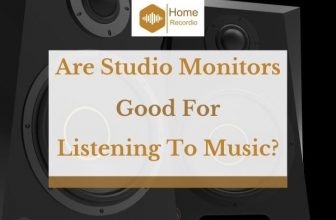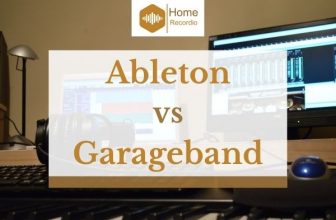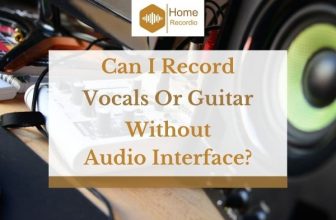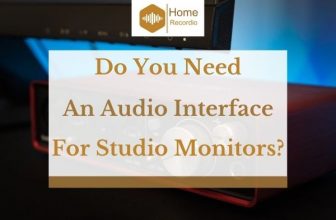How To Build A Home Recording Studio Setup
Building an audio home recording studio has become increasingly attractive over the past decade. The evolution of online producers, advancements in music technology and abundance of plugins makes it effortless to quickly set up a home recording studio that can produce high-quality records.
Whether you want to become a renowned producer or have interests in making music, setting up your studio at home makes for a natural choice.
However, it is essential to have the right home recording studio setup, especially if you want high-quality music and records.
The first step involves doing your research and setting a budget for the studio. You will be purchasing various hardware and software, and prices vary significantly for each piece of gear you pick. As such, the budget will guide your choices.
With this in mind, here’s a look at some of the critical aspects to review for your home studio setup.
Table of Contents
Computer: Your Digital Music Production Hub
- Essential Equipment

Computers are essential pieces of equipment in modern home recording studios. They are also cost-effective compared to purchasing individual musical equipment.
Software installation, mixing, and mastering are done on the computer as it is your production hub in the digital space.
You can choose a PC or laptop; there isn’t much difference as long as the specs are right. As a rule of thumb, home recording studio computers should meet the following minimum requirements:
- Processing power – The processor speed should be your top concern when assessing processing power for audio production. The more cores and faster clock speed the PC has, the more power it will have.
- Hard drive condition – You need adequate space for your DAWs (digital audio workstations), plugins, samples, and outputs.
More importantly, your hard drive should be solid and in good condition, especially since audio production can be demanding on the PC. - RAM – The computer should have enough RAM to run efficiently. While 8GB is considered sufficient for a typical home recording studio setup, it’s even better when you max out your PC’s RAM, especially if you plan to load multi-GB samples and libraries.
Audio Interface: Play and Record with Your Computer
- Essential Equipment
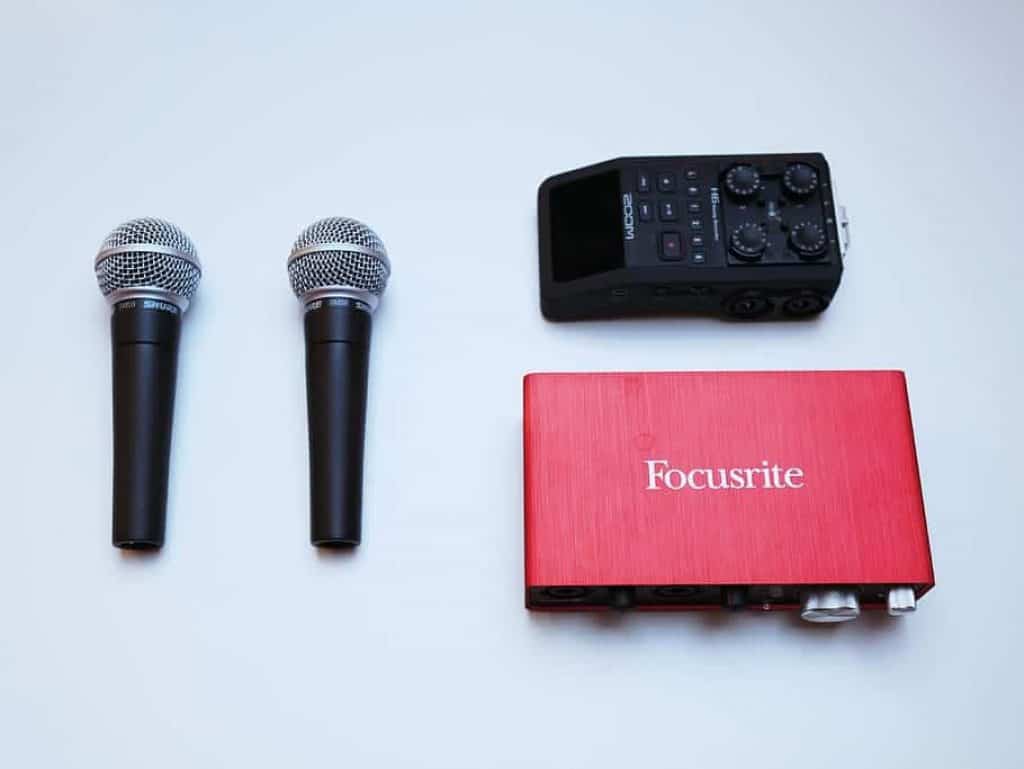
The audio interface is the second most important thing you need in your home recording studio setup.
It connects your computer to other musical devices, including inputs (microphones, midi input, pianos…), output (studio monitors, headphones) and processors (such as a compressor, although this is optional for home recording studios).
An audio interface converts analog audio signals into digital formats that the computer can understand and also converts the audio back into speaker-ready formats you can hear through headphones and other monitors.
There are several types of audio interfaces in the market, but you shouldn’t be intimidated with highly-priced premium-studio editions.
Your budget and the type of home recording studio you want to set up will determine the choices you make. It is essential to review your options carefully to find the most valuable offer.
Nonetheless, the priority is to find acceptable quality functional equipment, unless you seek hit – record type production, then you will need to invest heavily.
The audio interface plays various roles, including amplifying volumes from your microphones and applying sound limiters.
It is, therefore, essential to understand what a given model offers and make sure you are paying for functionalities you require.
Studio Monitors: Archive Better Mixing
- Essential Equipment
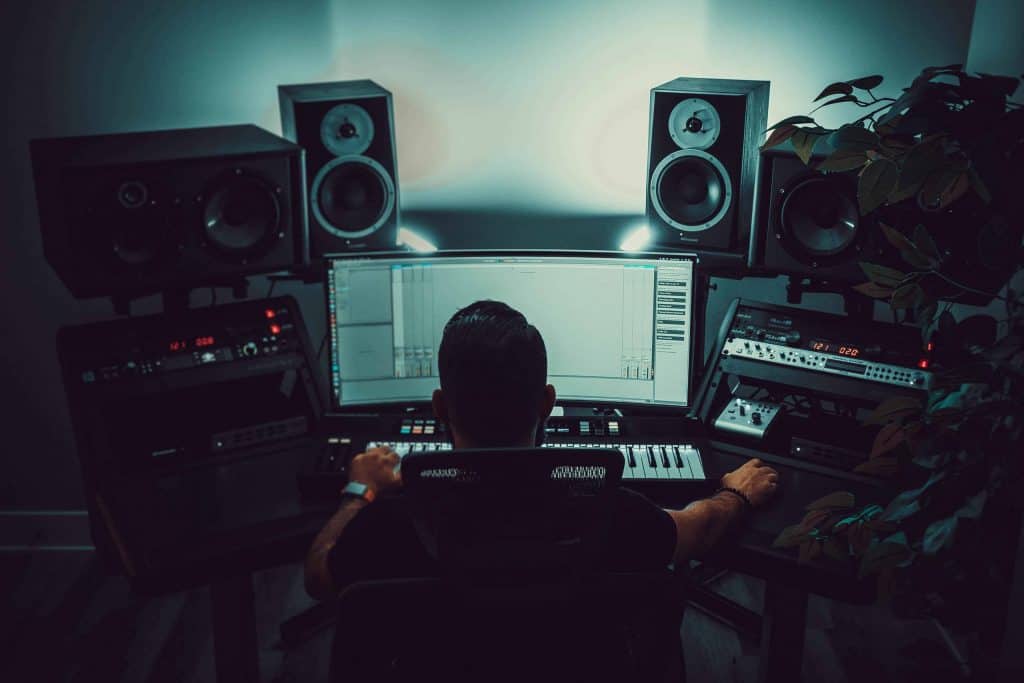
Once you have your interface and computer in place, the next piece of equipment you need is studio monitors.
These speakers are unlike typical consumer monitors that are enhanced and amplified to sweeten the output quality.
Instead, they are designed to present all faults in the audio so the producer can easily take care of them in the mixing and mastering stages.
Choosing studio monitors can be overwhelming as there are several elements to consider. It is essential to have the home recording studio setup in mind when picking monitors.
Your studio space, booth, room treatment, and overall environment have a significant role in the sound quality you get.
For instance, if you already have acoustic treatment with sound-absorbing foams, your monitors don’t have to be the most expensive item in the studio.
However, make sure you find good quality studio monitors that can reveal all the critical sound elements.
Choosing monitors is more like making purchase decisions for a phone, microphone, television, or fridge. There are some very cheap options, affordable options, expensive and super-expensive quality. Choose based on your budget.
Studio Microphones: Record Your Vocals Or Instruments
- Essential Equipment

The microphone is an essential component of any kind of studio. It is the leading recording equipment for human vocals and acoustic musical elements.
With most of the work handled in the digital workstation, the microphone allows producers to record raw audio from singers and other vocalists. It can also record musical instruments such as drums and guitars.
Choosing the right microphone for your home recording studio can prove overwhelming.
Several options are ranging from the cheapest quality USB microphones to phantom-powered options and those plugged directly into the audio interface.
There are also different types of microphones, including dynamic range karaoke-type to condenser microphones. Some record using single-face while others utilize all-around recording technologies.
It is advisable to spend reasonable for your mic as it affects the audio quality you have going into the digital workstation.
While you can find $30 offers, they aren’t anywhere near $200 microphones regarding recording and output quality.
Studio Headphones: Listen To Your Tracks
- Essential Equipment
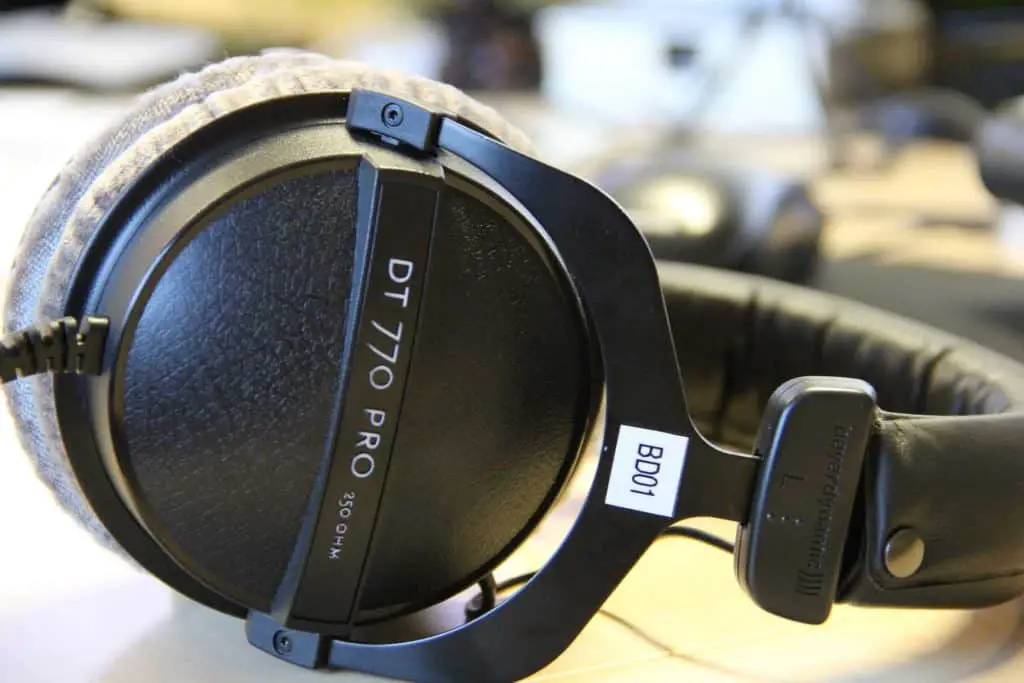
Studio monitors are ideal for mixing and mastering. However, the final music released will be heard through a wide variety of big and small monitors.
This includes smartphone speakers, radio speakers, club and concert monitors, earphones and earplugs, TV-set and laptop speakers, among others.
Studio headphones are designed to help you listen to all the musical elements and effects on the track.
Although many sound engineers recommend expensive monitors, it is entirely possible to complete tasks like mixing on a good studio microphone.
It also provides a different experience from studio monitors and suits tracking and mix referencing.
If you are on a budget, that doesn’t accommodate both monitors and headphones, find high-quality studio headphones.
After all, you can listen to the output through any other monitors you have and use them to make adjustments for consistency across a variety of speakers.
Nevertheless, studio monitors are essential if you seek radio and TV-ready music and content.
Having both will significantly improve the quality of your production. As a rule of thumb, spend up to third what you spent on the microphone on your headphones.
DAW: Music Recording Software
- Essential Equipment

The digital audio workstation (DAW) is another integral part of any home recording studio setup.
The workstation is the most significant interface as it is where you record, organize, mix and master your vocals. There are several DAWs in the market, sometimes referred to as recording software.
A digital audio workstation is to music what Photoshop and paint are to pictures.
You can install plugins for compression, equalizing, reverb and every other sound effect you can think of. DAWs are more than just recording software.
They offer a sleek interface to organize your tracks and add effects and final touches. Some of the popular DAWs include FL Studio, Logic Pro, Pro Tools, Cubase among many more.
No DAW is necessarily better than the other, although various distinctions hallmark reputable offers.
It all boils down to preference and familiarity. Find what workstation is more convenient for your workflow and style. You can also quickly learn how to use various workstations as they pretty much do the same thing.
Make sure you review the specifications and minimum space and RAM requirements. Also, pick the version for your computer as there are different options (windows, mac, tablet/smartphone).
Audio Cables: Connects Your Equipment Together
- Essential Equipment

Your home recording studio needs to have the right cables for proper connections and reduced interference.
You will also need to invest in quality power extensions that can provide enough sockets to plug your PC, UPS, monitors and audio Interface. What’s more, these devices need various types of cables.
Microphones, midi controllers, guitar amps, pianos and any other effect or synthesizer hardware require cable connection.
If you like, you can set up a local network for things like seamless DAW updates and internet connectivity, especially if you intend to stream or provide tutorials.
Like everything else, choosing cables tends to be a daunting process as there are several quality grades.
It is recommendable to purchase the products together with their cables. Choosing reputable retailers will ensure you always have a dependable shop in case you need replacements.
Once you have all the cables, it is vital to create a plan that will allow effortless connection and disconnection.
You should, therefore, envision your home recording studio setup and design the placement of each equipment and cabling. Pick credible retailers that offer warranties and quality guarantees.
Pop Filter: Improves Your Vocal Recording
- Essential Equipment

Pop filters are must-haves in premium Grammy-winning studios for obvious reasons, at least to producers. In sound theory and real-life experience, some sounds cause clicks and clips when recording.
P and B sound, for instance, cause a burst of air that may result in undesirable frequencies. Although most microphones come with a pop filter, you should consider investing in high-spec filters and mic cushions to improve the audio quality you record.
Nonetheless, you can use any pop filter that comes with the microphone provided the manufacturer and retailer are reliable. It’s all a matter of reviewing and comparing the options within your budget range.
A $50 pop filter should be able to serve the needs of any home recording studio setup, but you can spend more or less.
Microphone Stand: Keeps the Microphone in a Secured Place
- Essential Equipment

The stand is something most people forget when setting up their home recording studio. However, it is crucial, especially if you intend to record. Some people record standing, while others are more comfortable seat.
Whether you are recording instruments or vocals, it is essential to have the mic and pop filters in a stable recording position.
If you want a booth-type studio, a tripod microphone stand is vital. You can also purchase desktop microphone stands that resemble radio and national TV setups.
Stands ground the microphone at the best and most comfortable recording position. You can find retail microphone bundles that include the microphone, phantom power, cables, and stand.
Make sure you choose bundles from the same manufacturer or brand. Otherwise, compare existing home recording studio microphone stands to find the best design and quality for your needs.
Essentially, each microphone should have its stand, especially if you plan group recording. However, purchasing two or three stands will offer a good start for any home recording studio setup.
Stands should last several years, so it helps to buy the best quality your budget can accommodate.
Other Considerations
There are several other types of equipment and home studio gear you can purchase. Most producers prefer to have at least one instrument like a guitar, violin, or piano.
Although the digital solutions available today can produce acceptable quality played in national radios, local clubs and personal devices, there’s something exquisite about live recording instruments.
Its unique experience and tone can be felt, which is why most home recording studios have a couple of instruments.
Nonetheless, this shouldn’t be an issue as you can find near-perfect plugins for all instruments available.
DAWs also support samples, libraries, and MIDIs recorded from live instruments. If you are on a tight budget, do not worry about purchasing any musical instrument.
All you need is a MIDI input or controller (discussed above) and reliable VST plugins for the instrument or quality samples. Another essential consideration is the workflow from recording to mixing and processing.
For space efficiency, you need microphones away from the walls and enough cooling for your PC and audio interface. You also need sufficient flat surface, countertop, and comfortable seats.
Build A Recording Studio At Home
Building your home recording studio setup shouldn’t be a difficult task once you know the unique requirements.
Planning for the studio is crucial if you want to get the best value your budget can afford. You can find online content about how to build a $250 home studio and learn a lot.
However, the bottom line is cheap gear studios produce cheap quality music. The more you invest in equipment and acoustic treatment, the better quality you will achieve. Also, the prices vary from a couple of dollars to thousands for the same kind of gear.
You do not necessarily need the most expensive gear for a home recording studio setup, so this calls for comprehensive research and comparison.
To get the best gear for your money, make sure you choose credible, reputable retailers and brands that can guarantee equipment functionality and quality.

